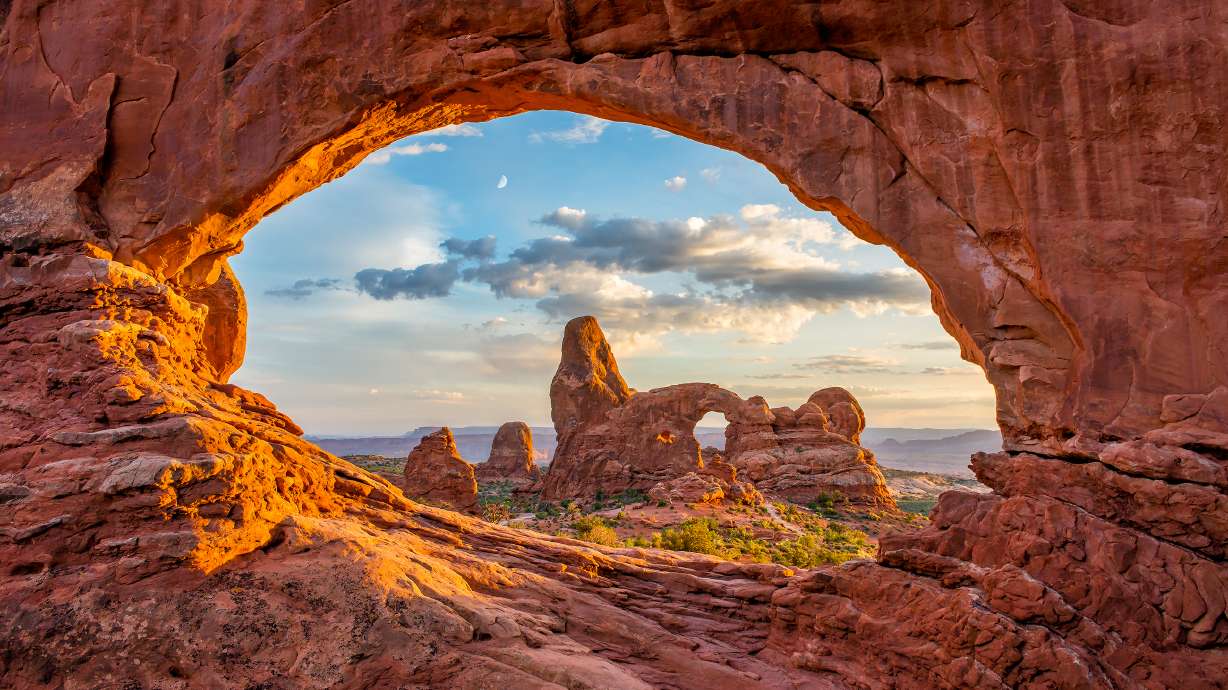Estimated read time: 4-5 minutes
This archived news story is available only for your personal, non-commercial use. Information in the story may be outdated or superseded by additional information. Reading or replaying the story in its archived form does not constitute a republication of the story.
SALT LAKE CITY — As the partial shutdown of the federal government approaches its third week, National Park Service officials are now taking drastic actions to keep the park sites open.
David Bernhardt, the acting secretary of the Department of the Interior, has directed the park service to use funds from recreational fees to support maintenance services, according to a letter from Bernhardt released over the weekend.
Those services include restrooms and sanitation, road maintenance, trash collection, campground operations and law enforcement services, according to Bernhardt’s letter.
Related:
Members of Utah’s congressional delegation, including representatives Rob Bishop, Chris Stewart, John Curtis and Ben McAdams, wrote letters to Bernhardt last week asking him to take emergency measures to give additional funding to the park service.
“We write to express our appreciation for the efforts of the Department of the Interior (DOI) to sustain access to our national parks during the current partial shutdown,” Bishop wrote in a letter that was also signed by Stewart and Curtis. “We believe, however, the administration has the authority to do more.”
In separate letters, the congressmen pointed to an exception in the Antideficiency Act. The act normally prohibits government agencies from operating while they are not receiving appropriations, according to the letters.
However, there is an exception for emergencies involving peoples’ safety and the protection of property, according to the letters. In response to the requests from the Utah delegation, Bernhardt approved an amended plan that will allow the parks to use more funding.
“I fundamentally believe the steps we are taking will better ensure our parks are protected for future generations, while still providing appropriate opportunities for the enjoyment of the American people today,” Bernhardt wrote.
Got this letter today from @Interior responding to my request (joining Utah’s reps) to safely open #Utah parks to visitors during the #shutdown. Will also continue supporting legislation that funds operations and reopens the government. #utpolpic.twitter.com/ghdFUisBLg
— Rep. Ben McAdams (@RepBenMcAdams) January 8, 2019
#mcadams_tweet
Though there might be some semantic differences between the terms “entrance fee” and “recreation fee,” all those monies typically go into the same pot of funding for individual parks, said David Nimkin, senior regional director for the southwest region of the National Parks Conservation Association.
Those can include entrance fees charged at the park gates, as well as fees from other services such as campground use and tickets for guided tours, Nimkin said. Recreation fees can also include permits for special uses within the parks, such as running the Colorado River through Grand Canyon National Park.
Many parks partner with a hospitality company, or concessionaire, that provides dining, lodging and other visitor services. A portion of fees paid for those services stays with the concessionaire, but a portion also goes to the park, according to Nimkin.
The problem with using the park fees for regular maintenance, though, is that they’re normally used for other things, Nimkin said.
“It’s not necessarily money that’s just sitting around waiting to be utilized,” he said.
During the shutdown, parks aren’t charging any fees.
The entire park service normally gets a $2 billion allocation from the federal government each year to operate, according to Nimkin.
In addition to that, parks keep 80 percent of entrance fees. The remaining 20 percent is distributed to park service sites that don’t charge fees.
Related:
Normally, the portion of entrance and recreation fees parks keep is meant to give the parks additional revenue beyond what’s allocated from the government, Nimkin said. They’re used for critical day-to-day needs, and they’re factored into the work plans for parks, he added.
There likely will be lots of maintenance work that will need to be done at parks once the government shutdown is over, he said. Fee funds would likely be used to help cover the costs for that work, he said.
But if parks use those funds to keep themselves open during the shutdown, they’ll have to find a difference source of money moving forward, Nimkin said.
“It really is stripping the cupboards bare of what is already a pretty sparse cupboard,” he said.
Though the park service will be allowed to use entrance and recreation fees to operate, those funds still won’t enable them to operate anywhere close to full capacity, Nimkin said.
Since the parks have been left without critical support services during the shutdown, the potential for damage to them is real, Nimkin said. He said he hopes the government reopens as soon as possible.
“People love and care about our national parks, and these actions are having a really serious impact on the places that we love,” Nimkin said. “I just would implore… our elected leaders to come together and find a resolution to this and get this shutdown over as soon as possible.”











